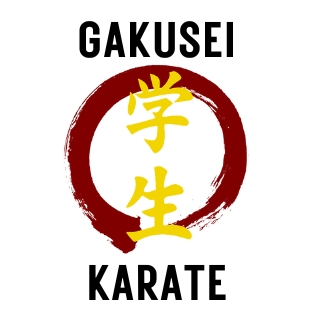Incorrect attitude about grading
Poor behaviour like pushing for a grading usually manifests because a student is more concerned with receiving the recognition of grading than actually getting good at karate. We are all at times motivated by the prospect of recognition but do not let this desire eclipse the desire to improve yourself and to be a better martial artist. The belt you wear is merely a measuring stick. Who you are, what you can do and who you are becoming is far more important.
While climbing the grade ladder is great motivation and becoming proficient at the syllabus is an important feature of training, it can simultaneously the cause of some of the worst behaviour.
Looking sideways
There is far more to grading than just being able to do the syllabus requirements. The syllabus is not a measure of your character, personal improvement, training ethic, or even the true depth of your understanding. It is common for students to look sideways at others and judge for themselves that they are better than someone else and deserve to grade because they can beat them in sparring or they got a higher score in kata at a tournament. Of course, these are not the only measures of a martial artist’s worthiness for their next belt. But more importantly, this kind of mindset distracts you from focusing on yourself and your own training.
Lastly, if you are taking a walk through a forest and someone overtakes you does it spoil your walk? Be concerned about yourself and your own progress, enjoy training and improving.
Asking for grading
You should never ask questions like “when am I going to grade?” instead ask “What do I need to work on in order to grade?” The second question assumes your responsibility for your progress which is an important trait to develop. Pressuring instructors to grade you or your child is rude and awkward. It displays a poor recognition hunting mindset.
Training to pass a grading rather than training to become a grade
Our syllabus, by design, is broad and covers 5 areas of training fundamentals (basics), combinations, sparring, self-defence and kata. But as broad and as comprehensive as it is there is so much more to becoming a good martial artist than just learning how to pass a test. Countless times we have seen students focus almost exclusively on what they will be tested on in their next grading, this leads to only a superficial understanding of karate. Like cramming for an exam – the student retains little of what they learn once the test is over.
Casualness in the dojo
The dojo is a place of learning, as a discipline to prevent sloppy or lazy behaviour students should not sit on chairs or lean on walls whether they are sitting or standing. Additionally, as a courtesy to other students and the instructor, students should line up quickly. Do not make people wait for you. If people are waiting for you, you should always run. Not to do so is to presume that your time is more important than your instructors and your peers. This is as practiced in traditional training in Japan.
Cheating the intent of rules
This is by no means an exhaustive list of all the etiquette and traditions that we can apply to our study of karate. Equally, we have seen students act like slick lawyers trying to manipulate the rules, etiquette and traditions to justify their actions or get their way. We must follow the intent and values behind the traditions and rules. These principles are what should guide our journey.

